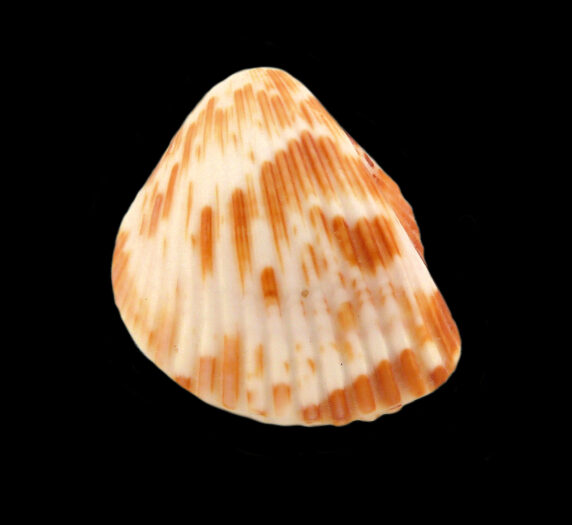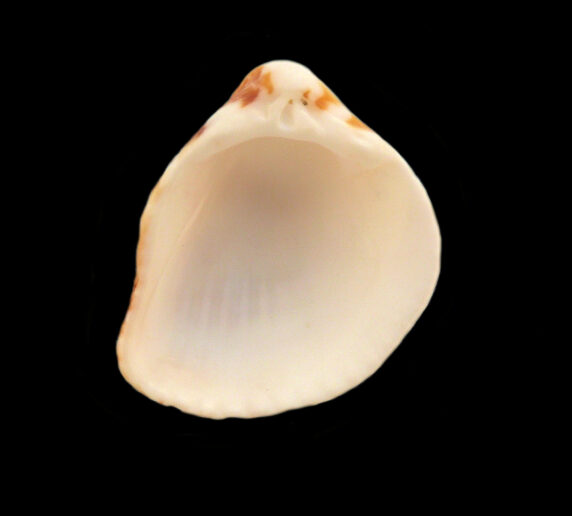Panamic Cardiid Shell, Americardia planicostata

 Panamic Cardiid Shell, Americardia planicostata. Size: 2.0 cm (0.8 inches) x 2.1 cm (0.8 inches). Shell collected from within the estuary of the Magdalena Bay complex, Baja California Sur, October 2018. Identification courtesy of Bob Hillis, Ivins, Utah.
Panamic Cardiid Shell, Americardia planicostata. Size: 2.0 cm (0.8 inches) x 2.1 cm (0.8 inches). Shell collected from within the estuary of the Magdalena Bay complex, Baja California Sur, October 2018. Identification courtesy of Bob Hillis, Ivins, Utah.
The Panamic Cardiid, Americardia planicostata (Broderip and G.B. Sowerby I, 1833), is a bivalve mollusk that is a member of the Cardiidae Family of Cockles and True Cockles, that is also known as the Flat-ribbed Cardiid. The shell is a sturdy with a rounded triangular profile they are higher than they are deep and the posterior appears chopped-off. The exterior of the shell is sculpted with 30 to 35 ribs. The interior margins are marked with short grooves. The exterior of the shells color is whitish, with brown blotches; the interior is smooth and white, although some may show a purple wash. The Panamic Cardiid Shell reach a maximum of 5.6 cm (2.5 inches) in length and 4.4 cm (1.7 inches) in height.
Panamic Cardiids are found within sand substrate in the intertidal zone to depths up to 24 m (80 feet). They are found in the southern Sea of Cortez, from La Paz to Cabo San Lucas, Baja California Sur. They range to Peru, including the Cocos Islands.
The Synonyms include Cardium guanacastense, Cardium planicostatum, Ctenocardia planicostata, and Trigonicardia guanacastensis.